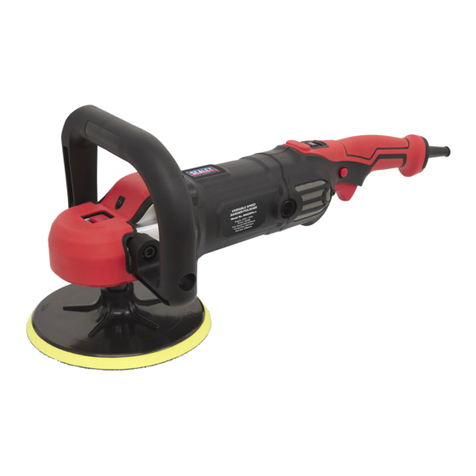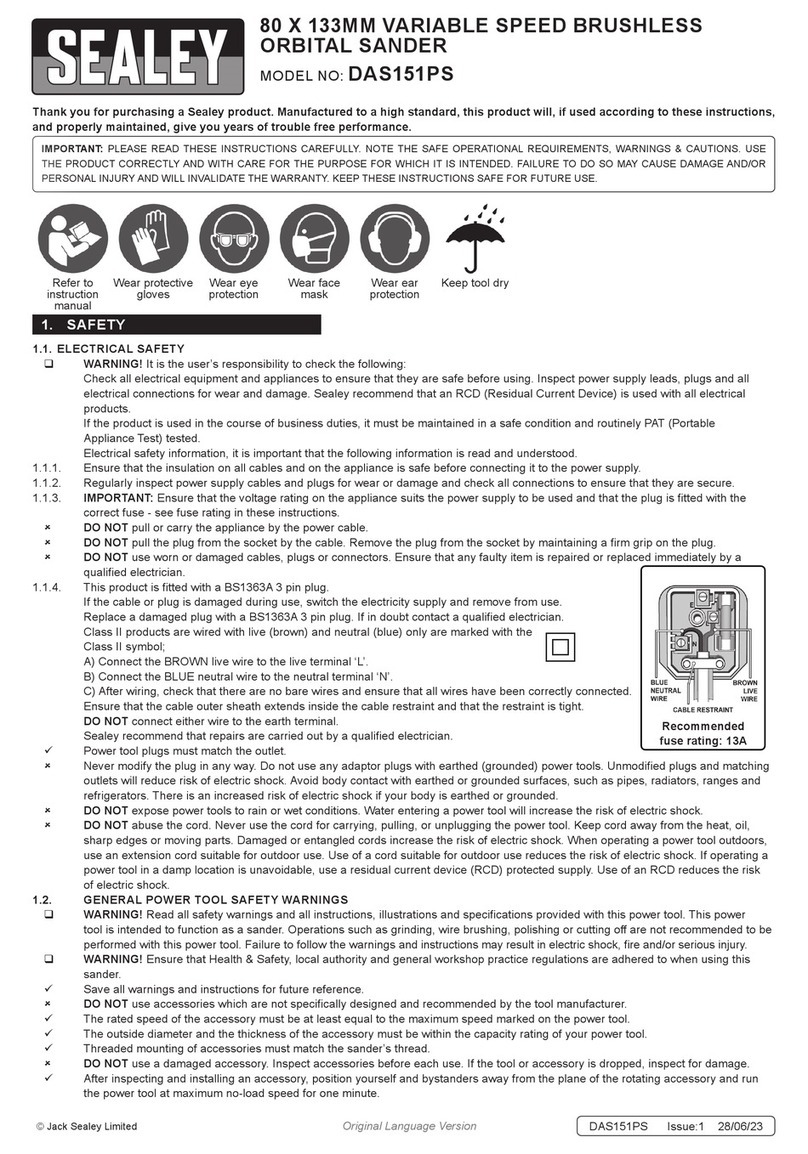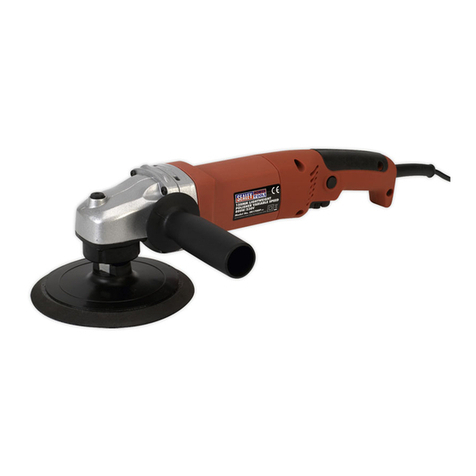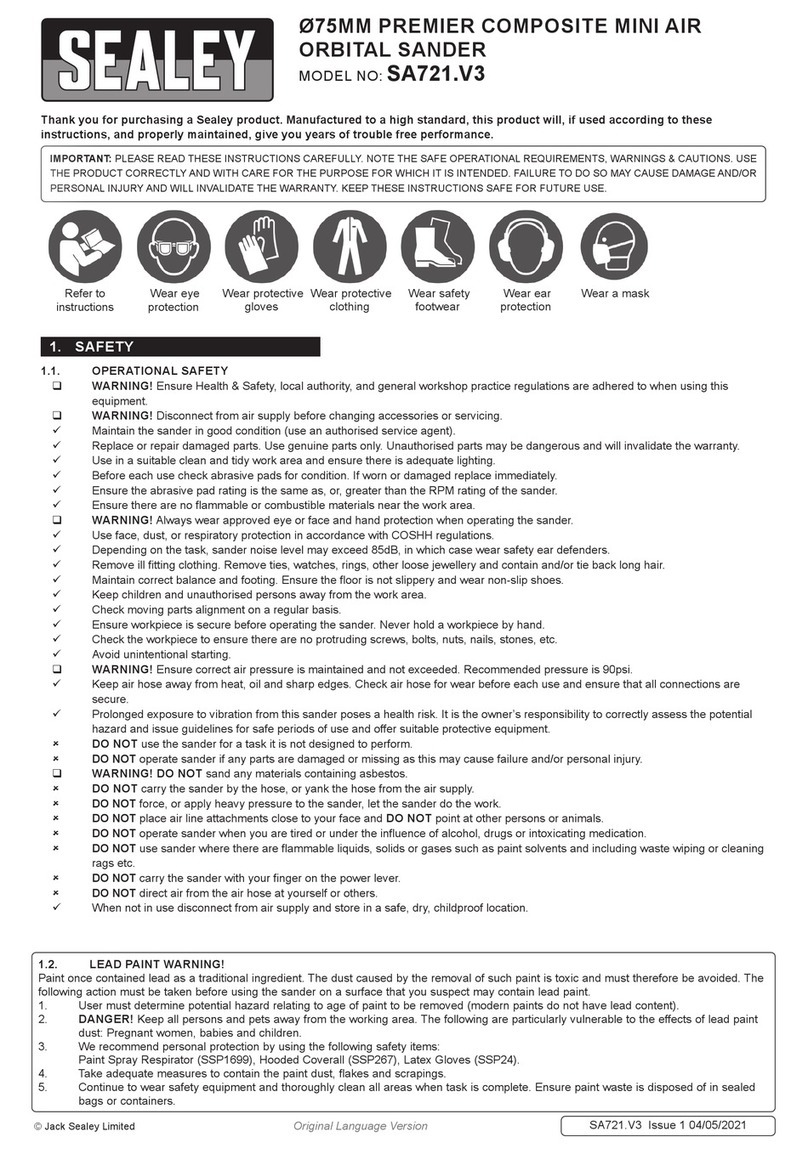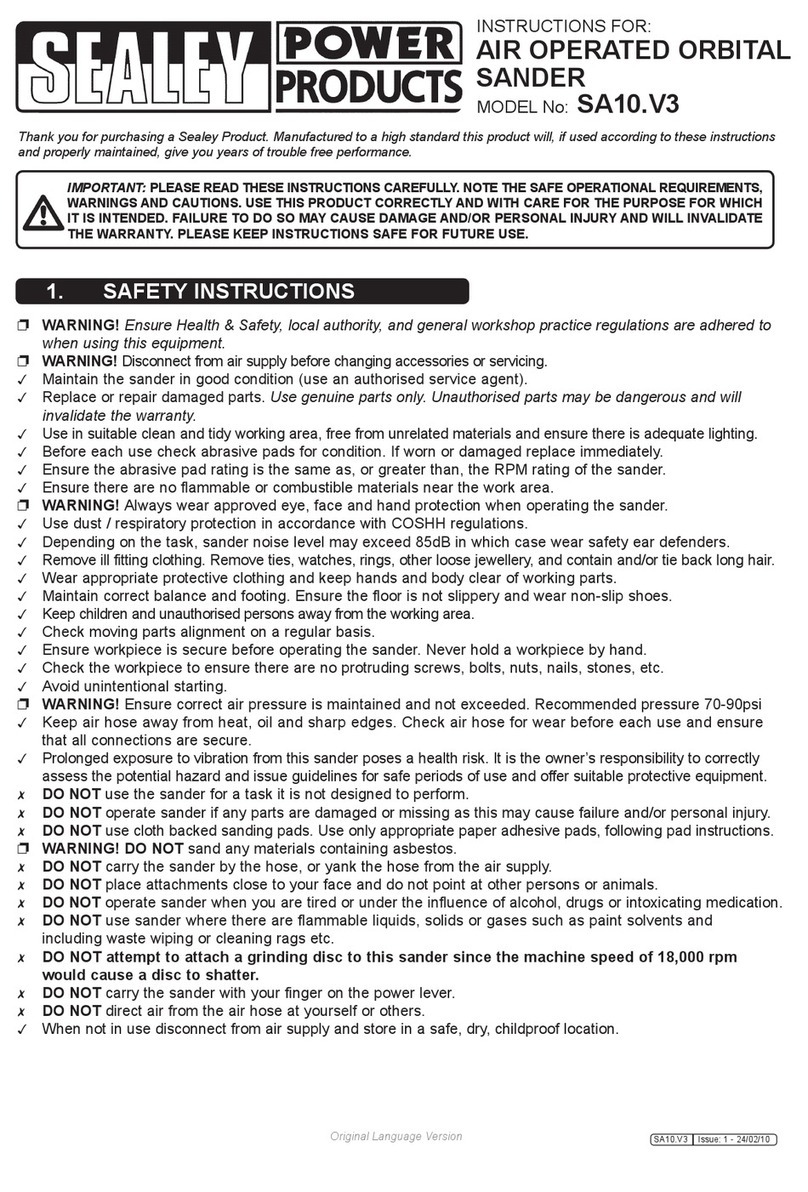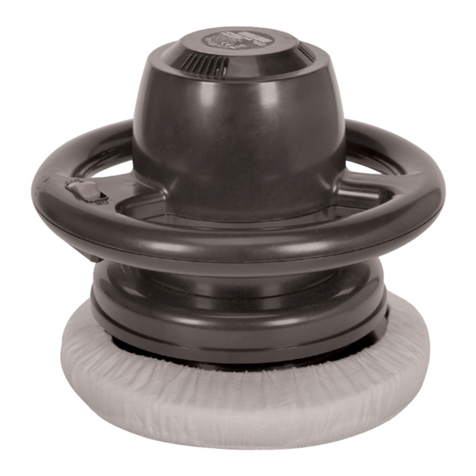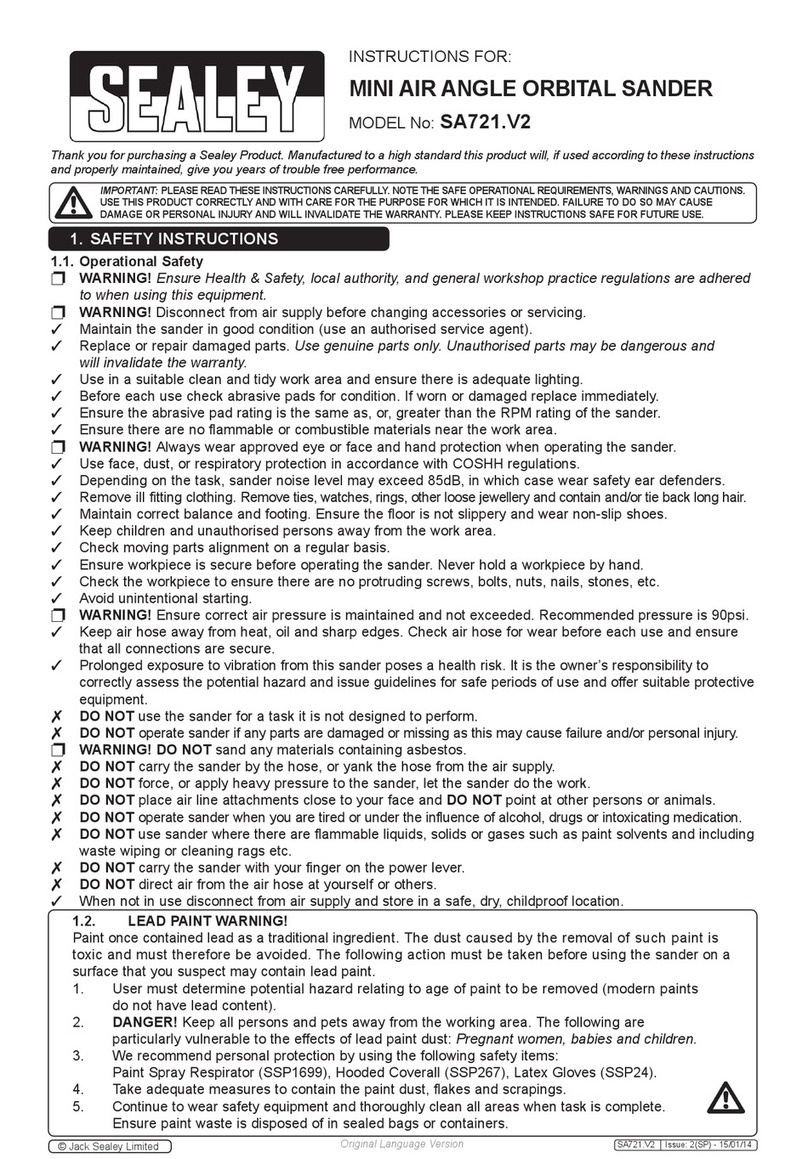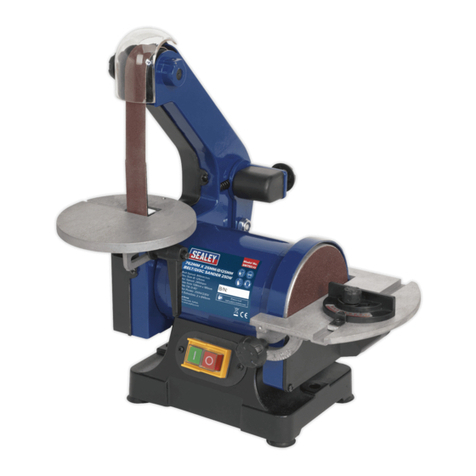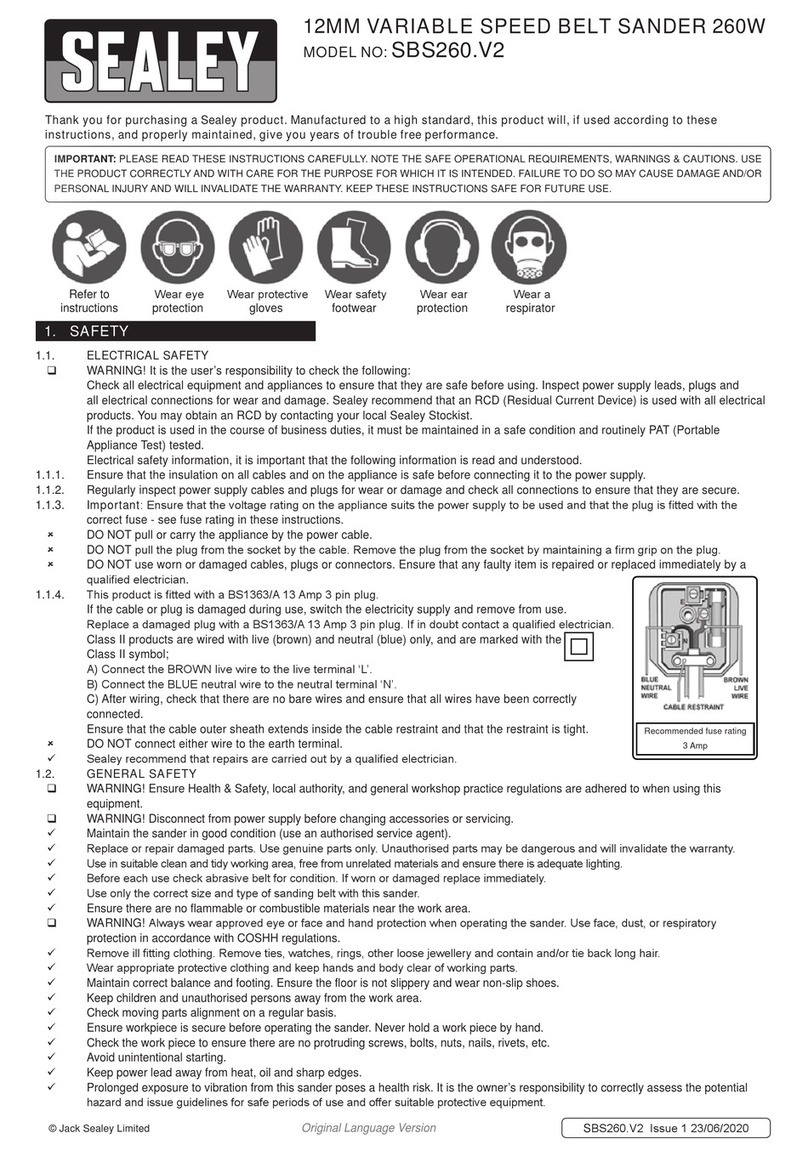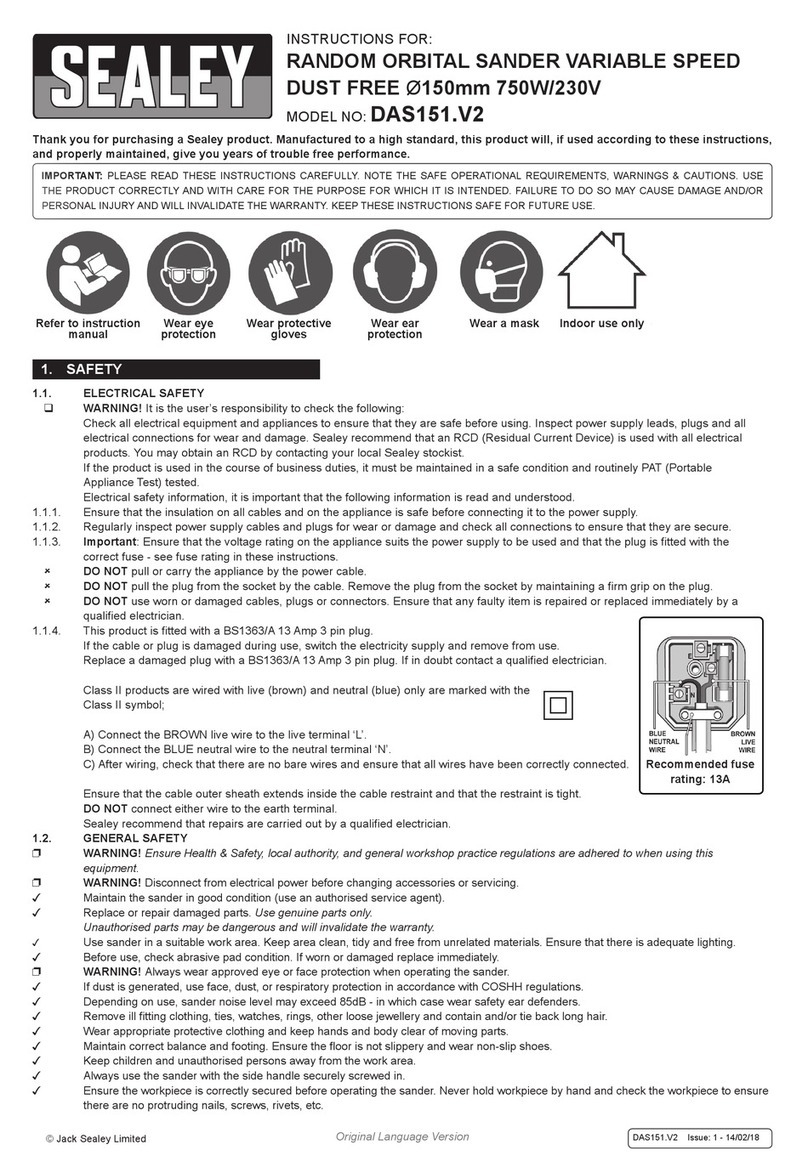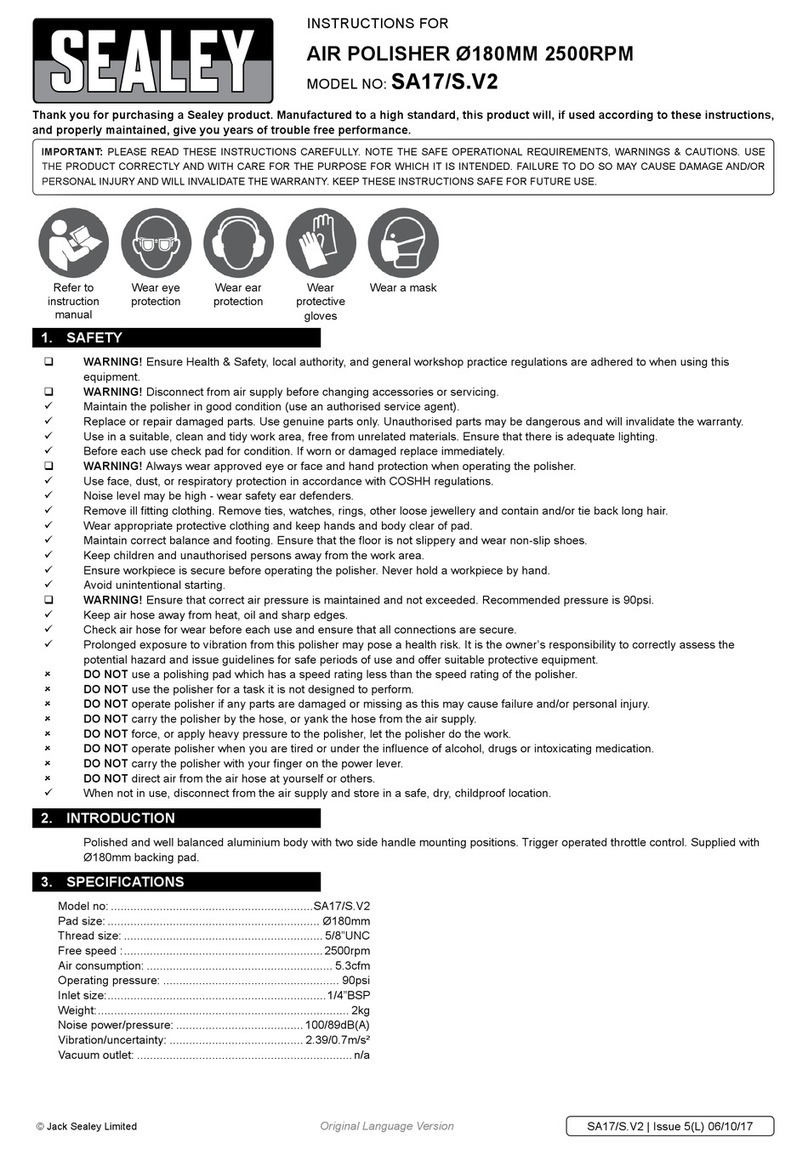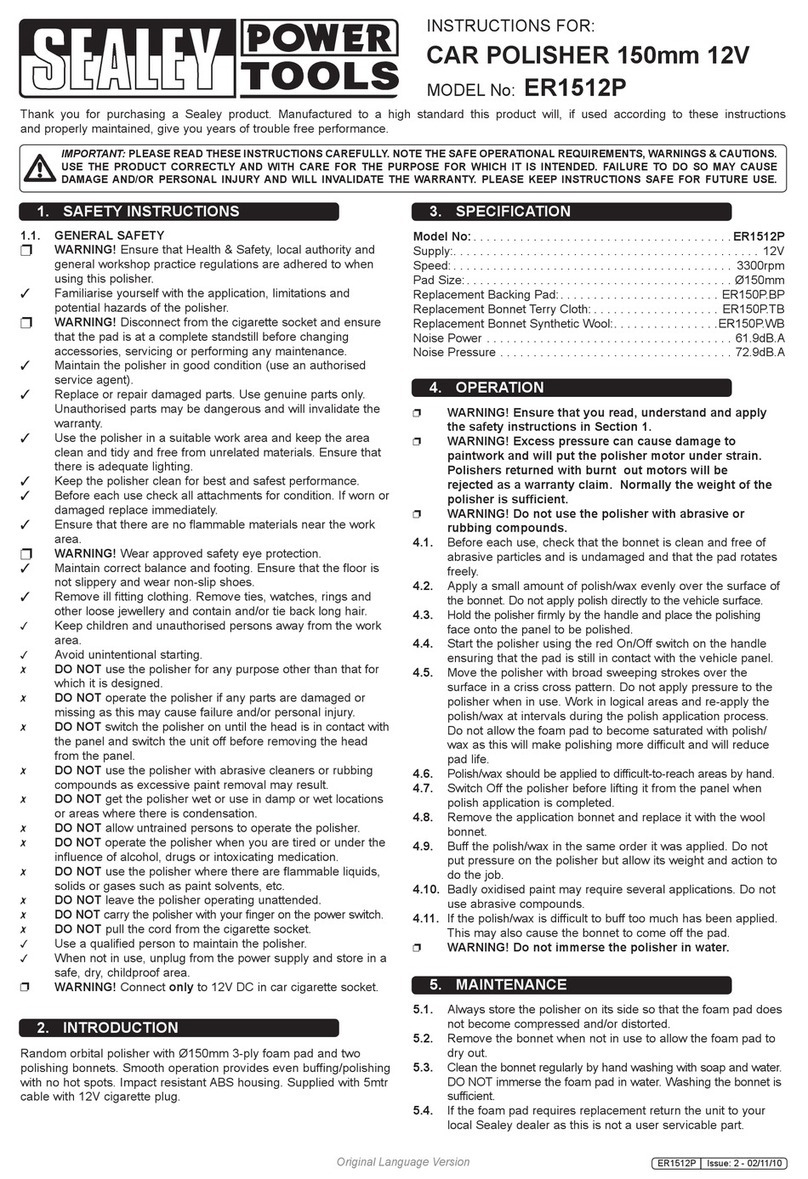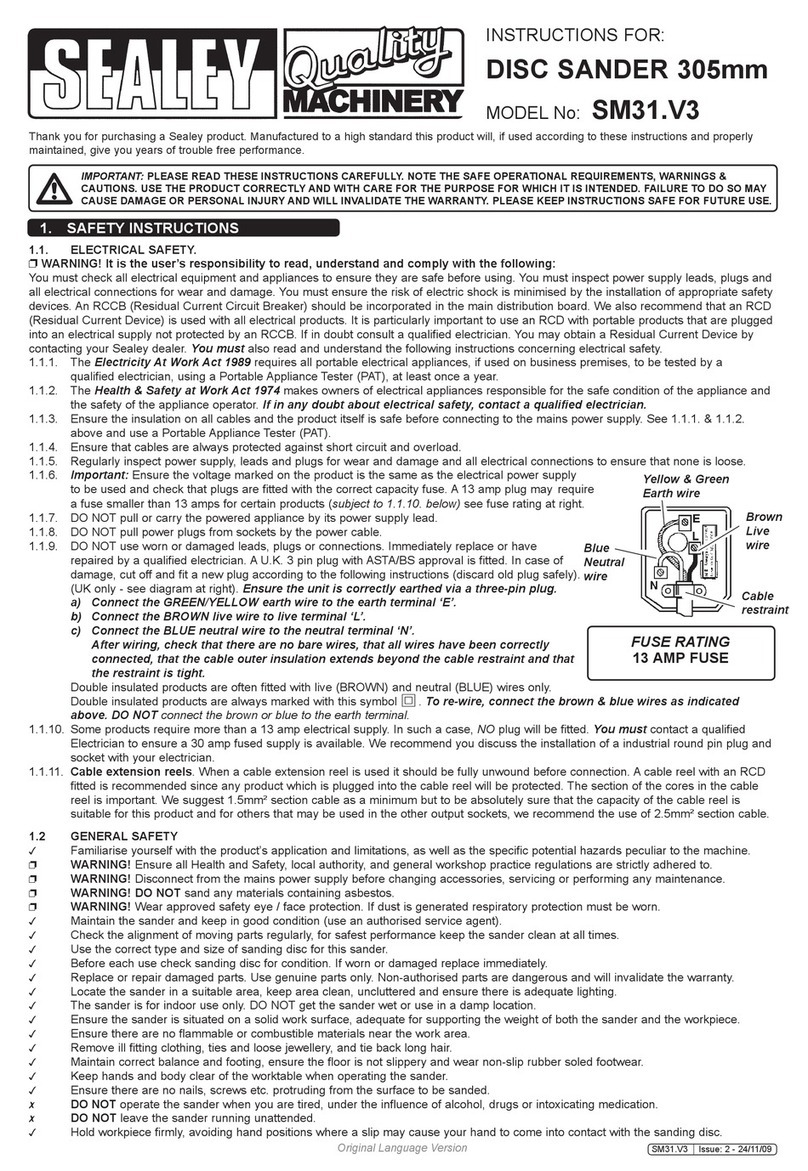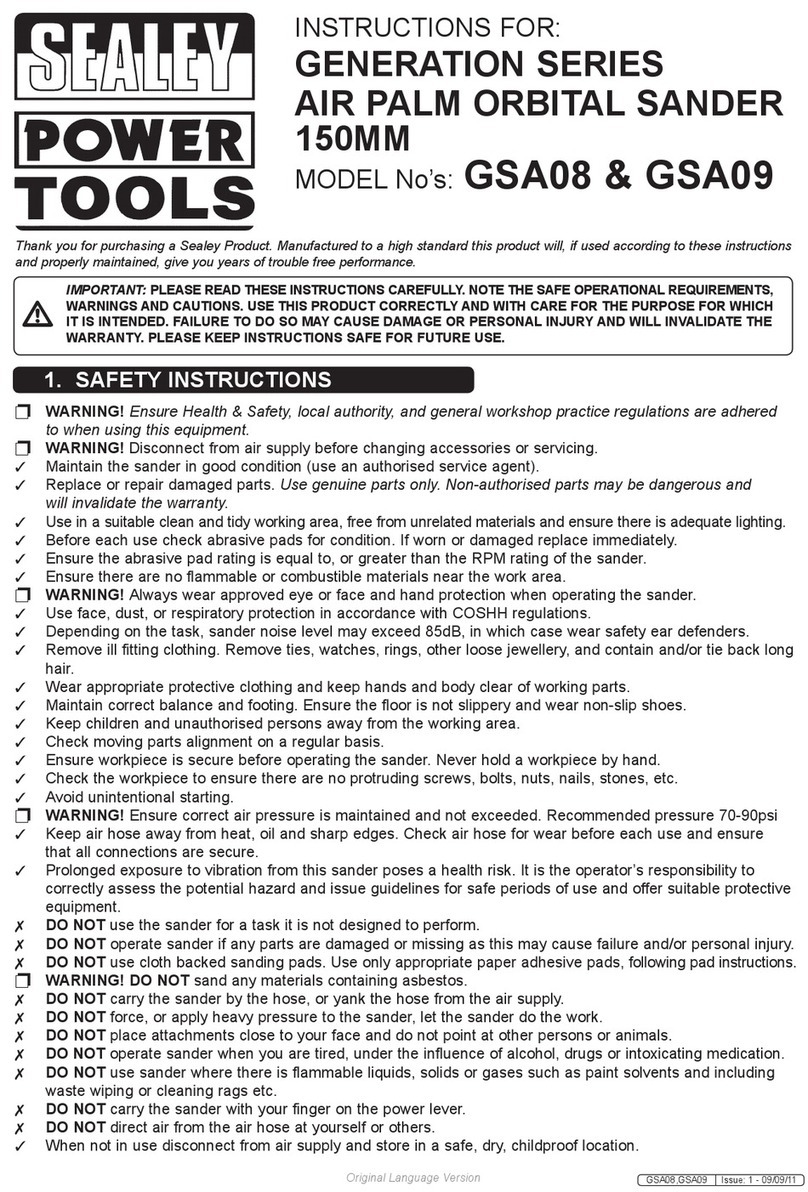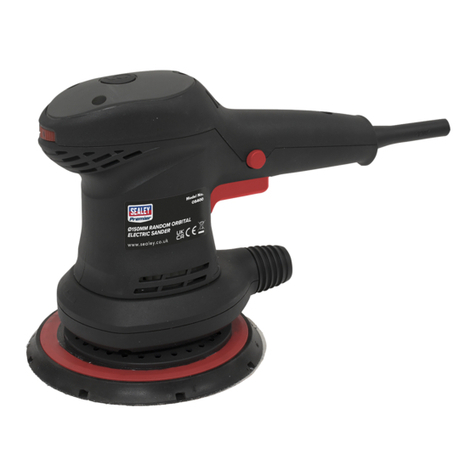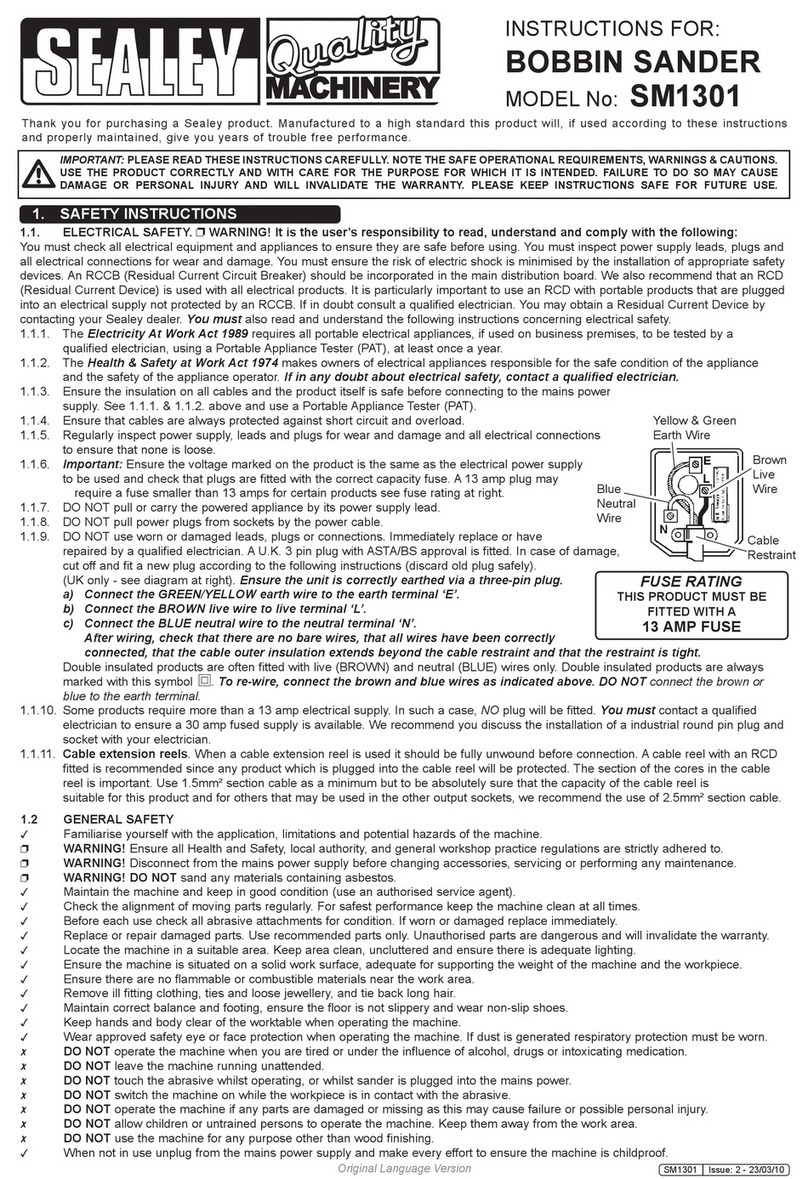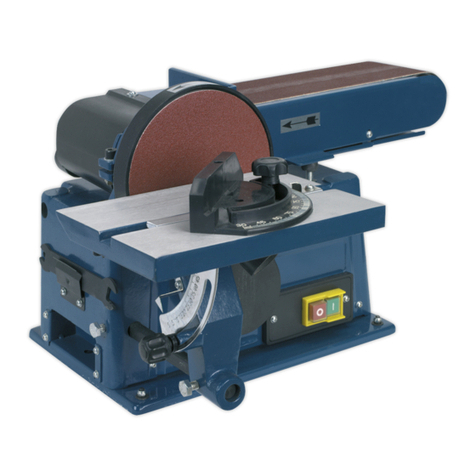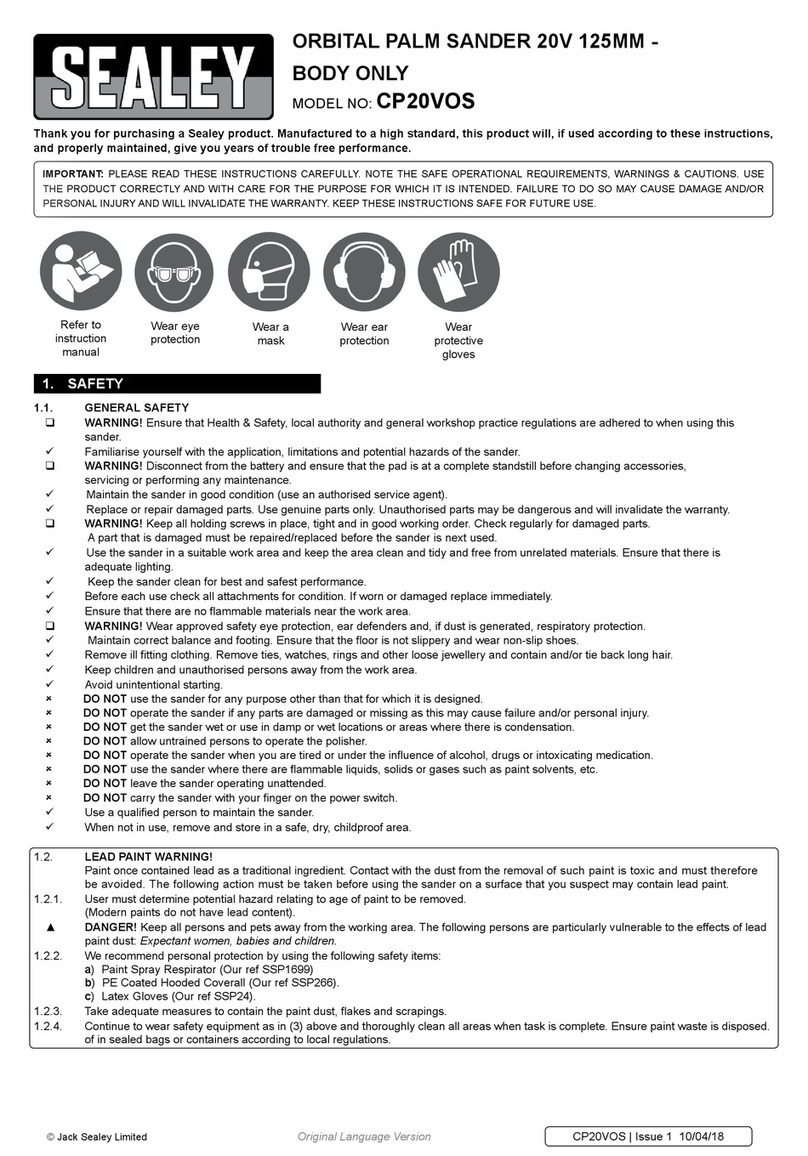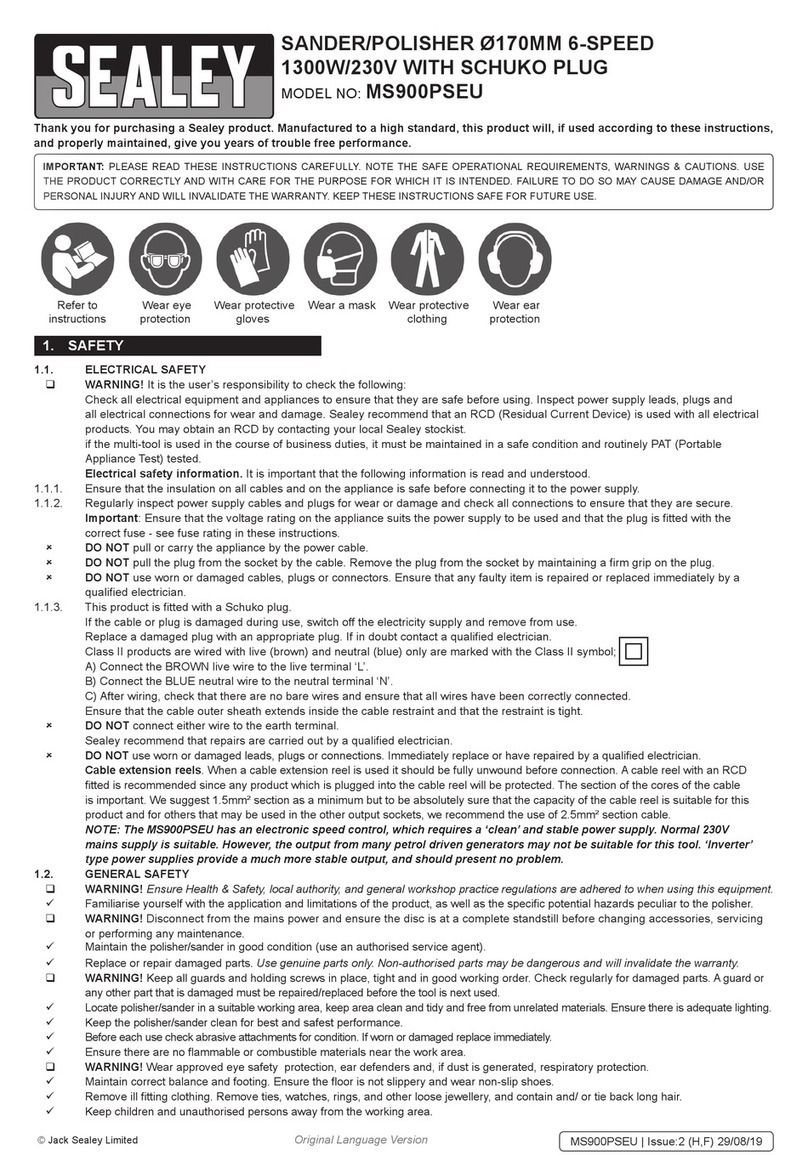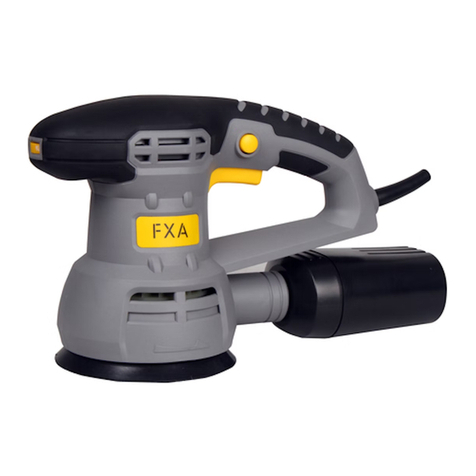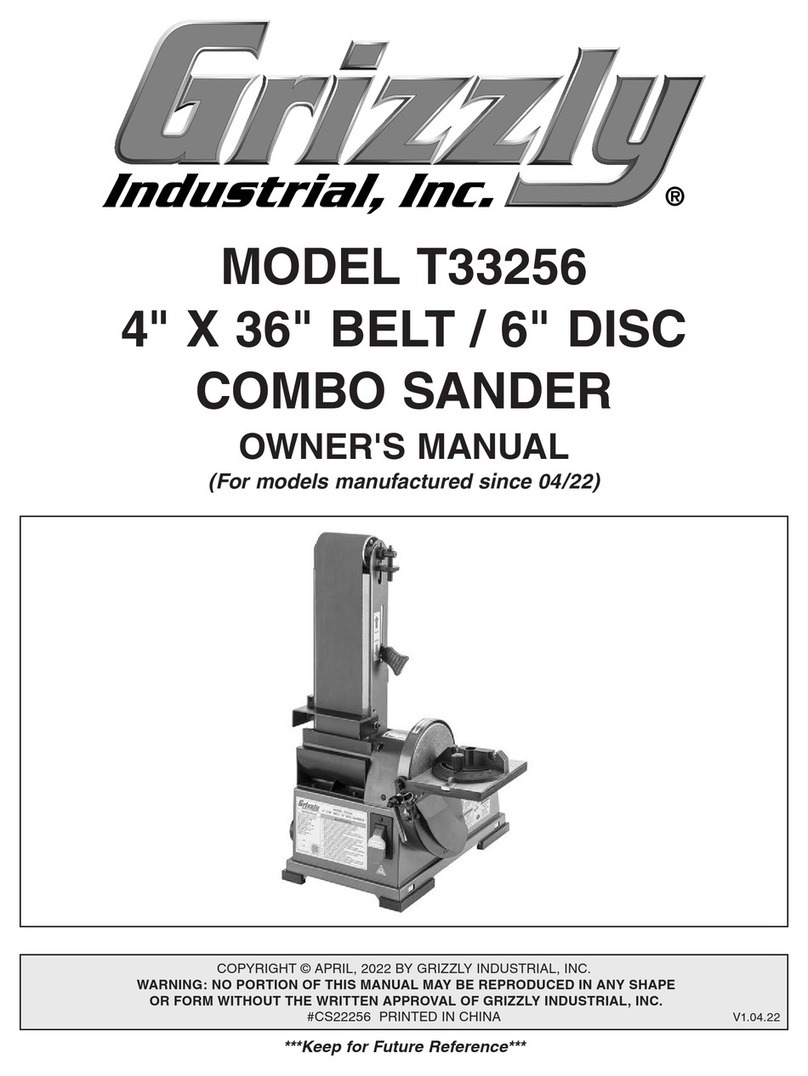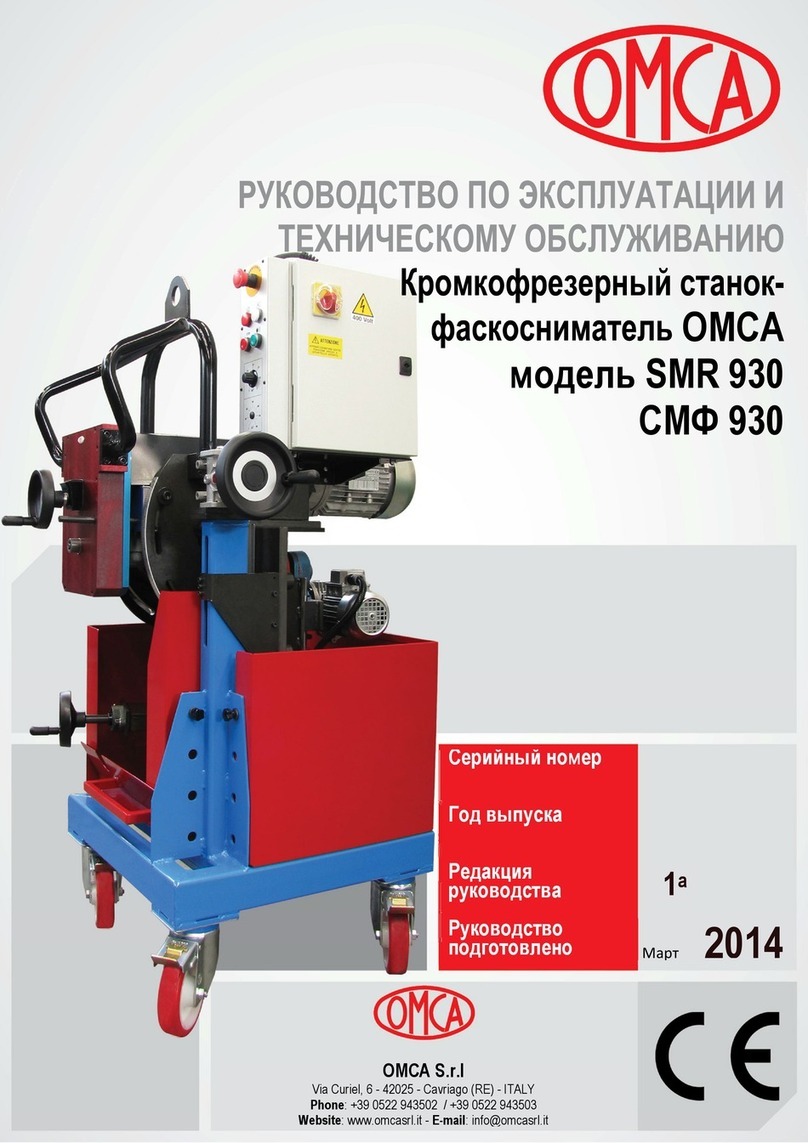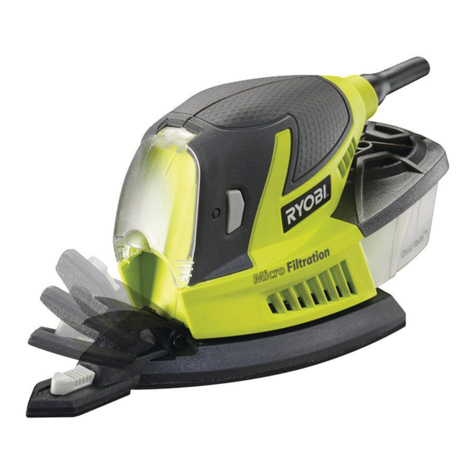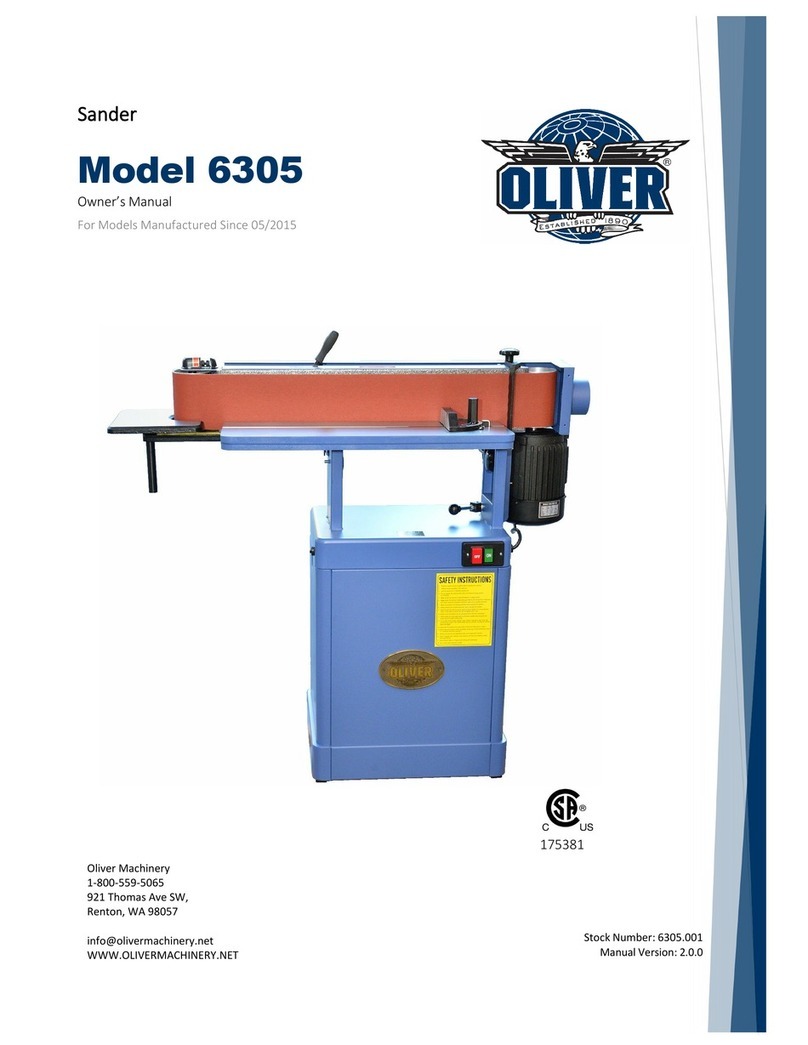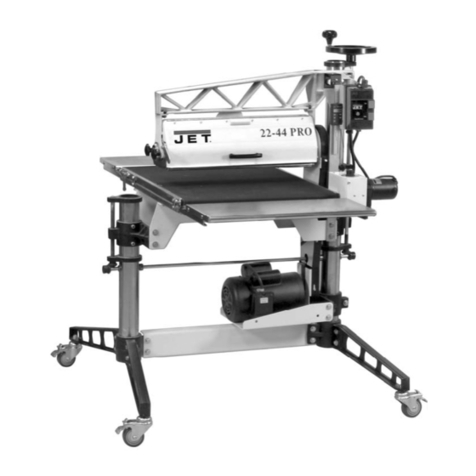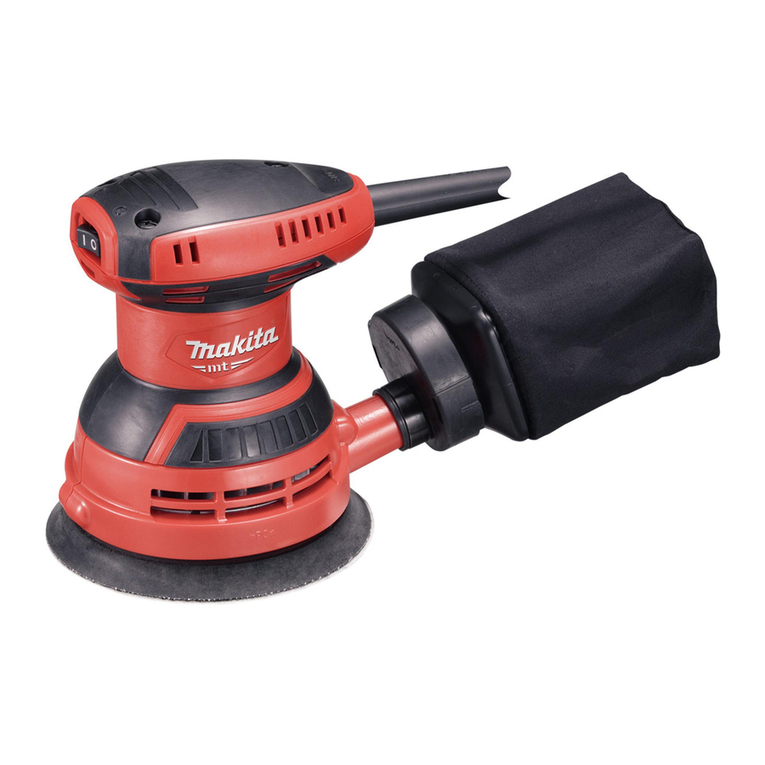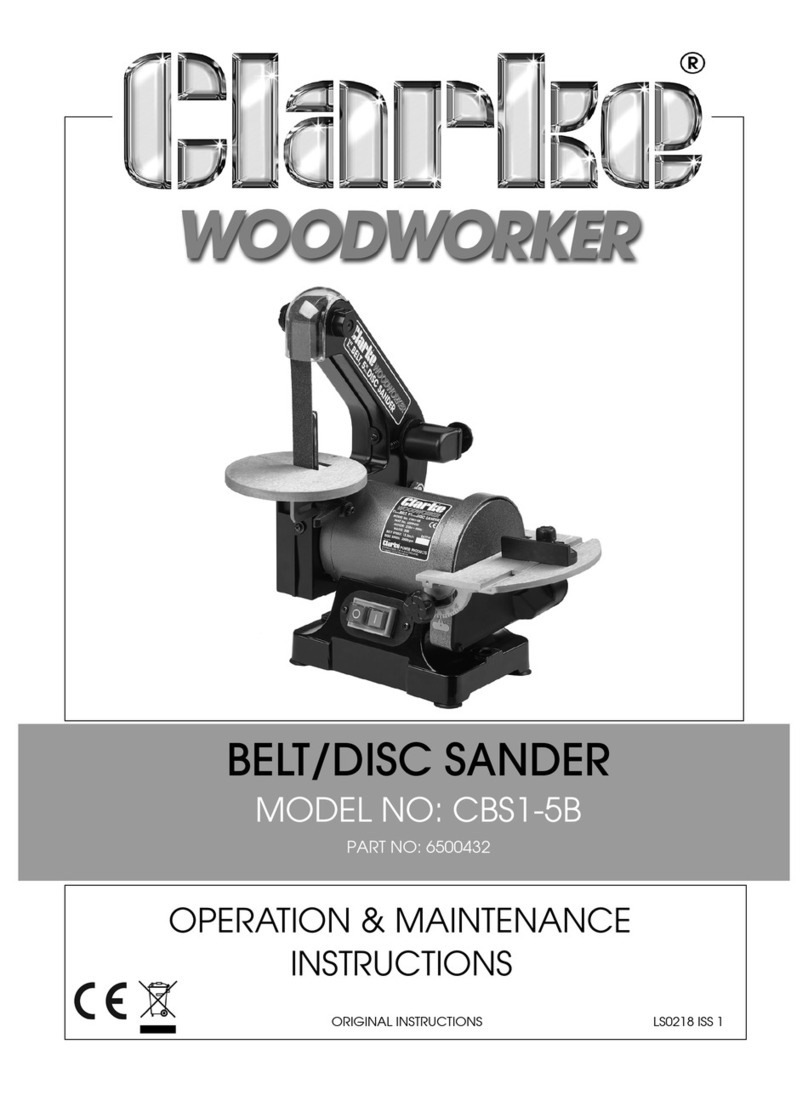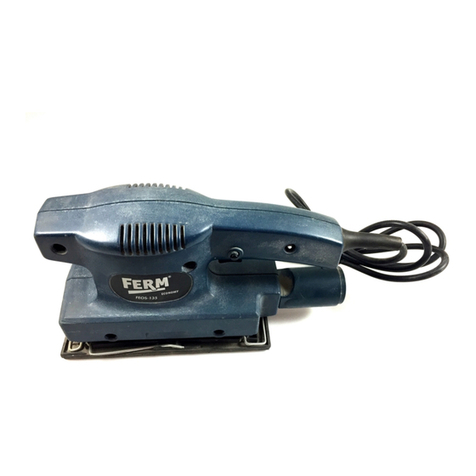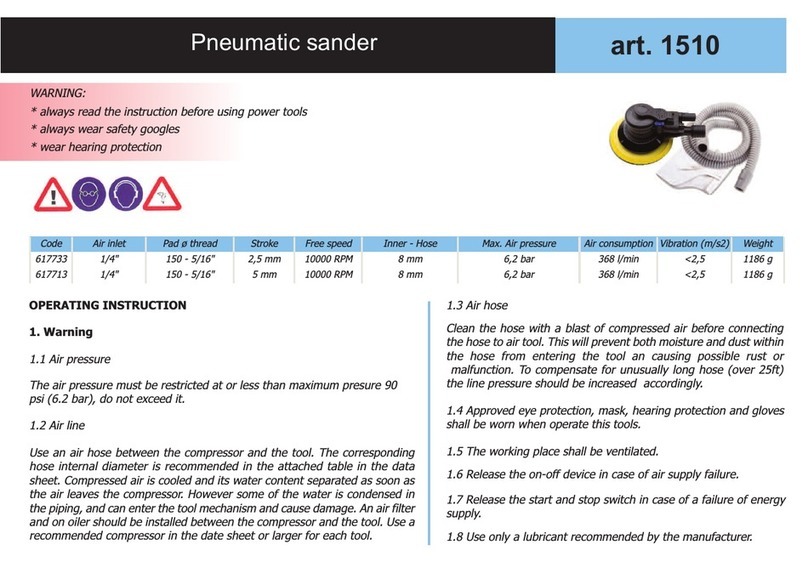
4.1. Unpack the product and check contents against
the parts listed below. If there is anything
damaged or missing contact your supplier
immediately.
Contents: a) SA35 Belt Sander.
b) 3 x Sanding Belt c) 2 x Hex. Key
pWARNING! Ensure that you have read and understood
the safety instructions in Section 1.
4.2. Loosening clamp bolt (fig.3.1. on the top of sander) allows the
angle between the grip and the belt to be altered to suit the job in hand.
After adjustment retighten the clamp bolt.
4.3. Once connected to the air supply the sander is started by squeezing the trigger (2).
4.4. To remove and replace the sanding belt push the idle pulley (3) towards the drive pulley (4) against
spring pressure. The pulley bracket (5) will retract and lock allowing removal/fitting of the belt. When the
new belt is in position release the pulley bracket by pushing in and holding the idle pulley, then press and
hold the tension bar (6) whilst releasing the pressure on the idle pulley.
4.5. The tracking of the belt can be altered by adjusted cross head screw (7).
2. INTRODUCTION & SPECIFICATION
3.1. Air Supply
3.1.1. Ensure the sander air valve (or throttle) is in the "off" position before connecting to the air supply.
3.1.2. You will require an air pressure between 70-90psi, and an air flow of 12cfm.
3.1.3. pWARNING! Ensure the air supply is clean and does not exceed 90 psi.
Too high an air pressure and unclean air will shorten the product life due to excessive wear, and may be
dangerous causing damage and/or personal injury.
3.1.4. Drain the air tank daily. Water in the air line will damage the sander and will invalidate your warranty.
3.1.5. Clean compressor air inlet filter weekly. Recommended hook-up procedure is shown in fig.1.
3.1.6. Line pressure should be increased to compensate for unusually long air hoses (over 8 metres).
The minimum hose size should be 1/4 I.D. and fittings must have the same inside dimensions.
3.1.7. Keep hoses away from heat, oil and sharp edges. Check hoses for wear, and make certain that all
connections are secure.
3.2. Couplings.
Vibration may cause failure if a quick change coupling is connected directly to the air sander. To overcome this,
connect a leader hose to the sander. A quick change coupling may then be used to connect the leader hose to the
air line recoil hose. See figs.1 & 2.
pWARNING! Disconnect sander from air supply before changing accessories, servicing or performing
maintenance. Replace or repair damaged parts. Use genuine parts only. Unauthorised parts may be
dangerous and will invalidate the warranty.
5.1. If the air supply system does not have an oiler lubricate the sander daily with a few drops of a good
grade air tool oil, such as Sealey ATO/500 or ATO/1000, dripped into the air inlet (fig.3.8) before use.
5.2. Clean the sander after use and change belt when required.
5.3. Loss of power or erratic action may be due to the following:
a) Excessive drain on the air supply. Moisture or restriction in the air line. Incorrect size or type of hose
connectors. To remedy, check the air supply and follow instructions in Section 3.
b) Grit or gum deposits in the sander may also reduce performance. If your model has an air filter
(located in the area of the air inlet), remove the filter and clean it. Flush the sander out with gum
solvent oil or an equal mixture of SAE No. 10 oil and kerosene. Allow to dry before use.
If you continue to experience problems, contact your local Sealey service agent.
5.4. For a full service contact your local Sealey service agent.
5.5. When not in use, disconnect from air supply, clean and store in a safe, dry, childproof location.
3. PREPARING FOR USE
4. OPERATING INSTRUCTIONS
5. MAINTENANCE
1.2. LEAD PAINT WARNING!
Paint once contained lead as a traditional ingredient. The dust from the removal of such paint is toxic if
ingested/inhaled and must, therefore, be avoided. The following actions must be taken before
using the sander on a surface that you suspect may contain lead paint.
1. User must determine potential hazard relating to age of paint to be removed.
(Modern paints do not have lead content).
2. DANGER! Keep all persons and pets away from the work area. The following persons are
particularly vulnerable to the effects of lead paint dust: Expectant women, babies and children.
3. We recommend personal protection by using the following safety items:
a) Paint Spray Respirator (Sealey ref. SSP16EN)
b) PE Coated Hooded Coverall (Sealey ref. SSP266). c) Latex Gloves (Sealey ref. SSP24).
4. Take adequate measures to contain the paint dust, flakes and scrapings.
5. Continue to wear safety equipment as in (3) above and thoroughly clean all areas when task is
complete. Ensure paint waste is disposed of in sealed bags or containers.
fig. 1
We, the sole importer into the UK, declare that the product listed here is in conformity with the
following standards and directives. The construction file for this product is held by the
Manufacturer and may be inspected, by a national authority, upon request to Jack Sealey Ltd.
For Jack Sealey Ltd. Sole distributor in the UK
of Sealey Power Products.
Air Operated 10mm Belt Sander
Model SA35
98/37/EC Machinery Directive
93/68/EEC Marking Directive
30th March 2001
Declaration of Conformity
Signed by Mark Sweetman
SA35 - 0016 - (1) - 290301
fig. 2
Specification
Belt . . . . . . . . . . . . . .10 x 320mm
Air Pressure . . . . . . . . . . . . .90psi
Air Consumption . . . . . . . . .12cfm
Air inlet . . . . . . . . . . . . . . .1/4BSP
The SA35 Belt Sander features an articulated sanding arm, belt tracking control, heavy-duty nose roller and one-
handed trigger operation. Suitable for sanding areas with limited access.
Weight . . . . . . . . . . . . . . . . .0.8kg
Airborne Noise . . . . . . .87.8dB (A)
86.5dB (C)
Vibration level . . . . . . . . .<2.5m/s2
fig. 3

